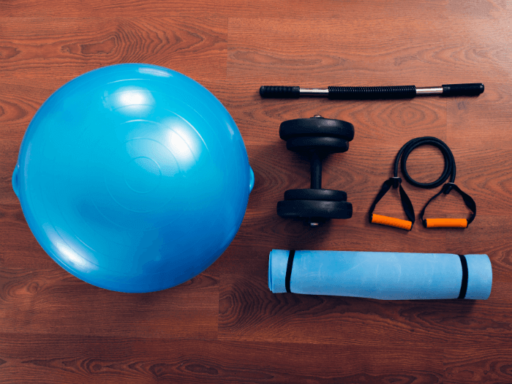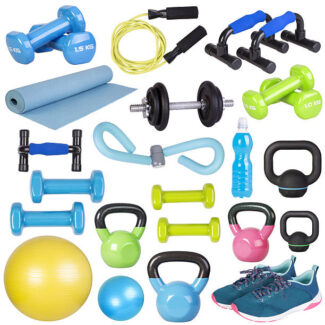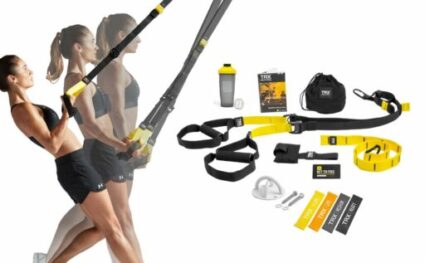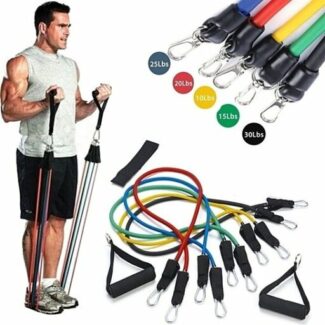The Surprisingly Simple Guide to Setting Up Your Perfect Home Gym
Why a Home Gym Might Be the Best Decision You Make. Dreaming of a home gym but worried it’ll break the bank or take up your whole garage? Good news: your ideal workout space is a lot easier (and cheaper) to create than you might think.
Forget Fancy Equipment—Keep It Simple
You don’t need fancy machines, complicated gadgets, or a fridge full of pricey protein shakes. The best gym could be right in your basement, spare room, or even that open spot in your living room. When your fitness setup is just a few steps from your kitchen, you’ve got one less excuse to skip your sweat session—no more traffic jams, monthly fees, or waiting for the squat rack to open up finally.
Home Gym on a Budget: Yes, It’s Possible
Think a home gym is expensive? It doesn’t have to be. For about the same price as a year’s worth of gym membership, you can put together a workout space that fits your goals and your lifestyle. Forget packing a gym bag or racing across town before sunrise—just roll out of bed, grab your coffee, and get moving to your favorite playlist.
The Power of Simplicity in Your Fitness Space
What makes a home gym great isn’t size or expensive equipment—it’s simplicity. You don’t need a massive room or gear that looks like it belongs in a science lab. Start with a few smart pieces: think dumbbells, resistance bands, a sturdy mat, and maybe a bench. These basics are more than enough for full-body strength, cardio, and flexibility work. As you get stronger and more confident, you can add or swap out equipment to keep things fresh and challenging.
Do You Need All Those Gym Machines?
Sure, commercial gyms have walls lined with every machine imaginable. But let’s be honest: most people rotate through the same handful of moves every session. Focus on the essentials, and you’ll get a better return on your investment—both for your wallet and your results.
Ready to Get Started?
Ready to turn that spare corner into the home gym you’ve always wanted? Stick around—we’ll walk you through exactly what you need (and what you can skip) so you can start sweating smarter, not harder.
Creating Your Perfect Home Gym (Without Breaking the Bank)
Let’s talk about the best-kept secret in fitness: you don’t need to spend a dime to get in shape. Your body is a gym all by itself. Think about it – push-ups, squats, lunges, and planks can torch just as many calories as that fancy HIIT class you’ve been eyeing. And they’re entirely free.
But since you’re considering setting up a home gym, let’s ensure you do it wisely.
Money First, Equipment Later
Before you start drooling over shiny dumbbells and fancy resistance bands, take a step back. Ask yourself: “What’s my budget?” Maybe it’s what you’d spend on a few months at your local gym, or perhaps you’ve been saving for something unique. Whatever the number, write it down, and this is your spending ceiling.
Now, here’s a trick that’ll save you from buyer’s remorse: split your wishlist into three parts:
- Must-haves: These are your workout foundation pieces
- Would-be-nice: The items that would add some spice to your routine
- Dream gear: The “if I win the lottery” equipment
Start with the must-haves. If there’s money left over (and that’s a big if), then you can peek at those other categories. But remember – some of the fittest people in the world started with nothing but a floor and determination. What is the beauty of building a home gym this way? You’ll have what you need, not what some flashy fitness influencer tells you to buy. And your wallet will thank you later.

Smart Shopping for Your Home Gym
Let’s talk money — because building a home gym doesn’t have to empty your bank account.
Here’s a little secret: the used fitness equipment market is a gold mine. Thousands of people buy shiny new equipment with the best intentions every January, only to watch it gather dust by February. Their buyer’s remorse is your ticket to savings. We’re talking top-notch dumbbells, barbells, and cardio machines for half price or less.
And don’t worry about quality. Most used equipment barely sees a drop of sweat. I’ve seen practically new Peloton bikes and professional-grade power racks pop up for sale months after purchase. (But unlike those sellers, you will use your equipment, right?)
Want excellent deals? Check out specialty refurb sites like Fitnessfactory.com, Premier Fitness Source, or Rebirth Fitness. These sites thoroughly inspect and tune up everything before selling. You can also dive into eBay and Amazon’s used sections, and you’d be amazed at how many sellers offer untouched “open box” items at steal prices.
Building Your Home Gym: Start With the Basics
Let’s talk about setting up your home gym without breaking the bank. Here’s something most fitness influencers won’t tell you: your body is all you need to get started. But since you’re here, let’s explore some equipment to take your workouts to the next level.
The Essential Five
First up is the humble yoga mat. If you exercise on hardwood or concrete (ouch!), your joints will thank you for this one. It’s perfect for floor work, stretching, and when you question your life choices during ab exercises.

Next, grab a jump rope. It’s like having a cardio machine that fits in your pocket. Plus, there’s something satisfying about mastering those double-unders after whipping yourself in the shins a few times. Trust me, we’ve all been there.
Now, let’s talk dumbbells. You don’t need to turn your spare room into a weight rack. Start with three to five pairs. Here’s a pro tip: if you’re a guy, 10-pound increments work well. Ladies, 5-pound jumps tend to be more practical. Or skip the whole collection and get adjustable dumbbells – like the Swiss Army knife of strength training.
Resistance bands are fourth on our list, and they’re seriously underrated. Get the mini bands (perfect for booty-burning exercises like monster walks and clamshells) and the longer ones with handles (great for upper body work). Choose from three resistances: light for feeling weak, medium for your regular days, and heavy for feeling like a superhero.
Finally, consider a pull-up bar. “But I can’t do pull-ups!” you say. Neither could I at first. That’s why resistance bands exist – like training wheels for your pull-up journey. Plus, this bar can double as an anchor point for other exercises.
Nice-to-Have Additions
If you’ve got some extra cash and space, here are some bonus items to consider:
A weight bench is surprisingly versatile. In addition to the bench press, you can use it for step-ups, hip thrusts, and scrolling through your phone between sets (kidding).
Sliders are my secret weapon. They look innocent enough – just little discs that slide across your floor – but they’ll have your core screaming during mountain climbers, making lunges feel like a whole new experience. Plus, they cost about as much as a fancy coffee.
For the more ambitious, a barbell set with a power rack is the gateway to serious strength training. But remember: you can always add this later when you’re ready to channel your inner powerlifter.
A plyo box or exercise step might seem basic, but how many exercises you can do with a sturdy box is impressive. Box jumps, step-ups, elevated push-ups – the list goes on. Just start with a lower height than you think you need. Your shins will appreciate the caution.
Remember, you don’t need everything at once. Start with the essentials and build up as your fitness journey evolves. The best home gym is the one you’ll use, even if it’s just a yoga mat and a dream at first.
The “If You’ve Got Space and Cash” Equipment Guide
Let’s talk about the fun stuff – you know, those pieces of equipment that aren’t strictly essential but might make your workouts more enjoyable. Think of these as the sprinkles on your workout sundae.

First up: cardio machines. Here’s the truth – you don’t need them. Mother Nature provides a pretty excellent gym (it’s called “Outside”), and you can get a killer cardio workout with nothing but your body weight. Jump rope, mountain climbers, or good old-fashioned running will pump your heart just fine.
But maybe you’re like me and love watching Netflix while you run, or you live somewhere where winter means three months of ice and darkness. In that case, a treadmill or stationary bike might be worth the investment. Just remember this golden rule: don’t cheap out. That $200 treadmill might look tempting, but it’ll probably become the world’s most expensive clothes hanger.
If you’re eyeing a treadmill, you’ll want to think about:
- How much floor space can you sacrifice
- Motor power (bigger is usually better)
- Belt size (especially important if you’re tall or have a longer stride)
- Whether you want to pretend you’re climbing Mount Everest (aka incline features)
- How cushy do you want your run to be (cushioning options)
- All those fancy bells and whistles (touchscreens, workout programs, etc.)
Additional Fun Toys (I mean equipment)
And hey, while we’re dreaming big, here are some other fun toys to consider adding to your fitness playground:

A balance board (because who doesn’t want to feel like a circus performer?), foam roller (your muscles will thank you), kettlebell (for when dumbbells get boring), medicine ball (great for pretending you’re Rocky), or a TRX system (turns any space into a full gym).
For the more adventurous, there are always battle ropes (warning: they will make you feel like a warrior and look like a sweaty mess), a heavy bag (fantastic stress relief), a speedbag (channel your inner boxer), or a rebounder (an adult trampoline—yes, it counts as exercise!).
Remember: these are the chocolate chips in your workout cookie – nice to have, but not essential for a great result. Choose what genuinely excites you and fits your space and budget. After all, the best equipment is the stuff you’ll use.
The Fun Part: Your Dream Equipment Wishlist
Let’s talk about the stuff that makes your inner fitness geek drool. You know, those shiny machines that’ll have your friends “dropping by” more often than you’d like.
Want the truth about high-end cardio machines? They’re expensive as hell, but they’re also pretty impressive. Take Peloton or Technogym – these aren’t just treadmills or bikes; they’re like having a personal trainer on your LCD screen. Sure, you’ll need to shell out a monthly subscription fee on top of the initial investment, but having access to world-class instructors while you’re still in your PJs? Priceless.
If you’re dreaming even more prominently, there’s always the all-in-one home gym route. Bowflex and NordicTrack are the big names here, and they’ve come a long way from those late-night infomercials. Modern versions are like having an entire gym crammed into one corner of your room – we’re talking cables, weight stacks, pull-up bars, leg press stations, and the works. Your wallet might cry a little, but your muscles will thank you.
And here’s something cool that wasn’t around a few years ago: high-tech studio workouts. Are you missing your favorite boxing class? FightCamp brings the ring to you. Can’t live without your trainer? Check out Mirror—a smart mirror doubling as your private fitness studio. The future is weird, but I kind of love it.
Just remember: these aren’t impulse buys. Take your time, do your research, and maybe start saving now. Your future self (and all those friends who suddenly want to work out with you) will appreciate it.

Final Thoughts on Setting Up Your Home Gym
Want to skip the gym membership and work out at home? You’re not alone. While a home gym might conjure images of expensive equipment and massive spaces, creating a practical workout space at home is simpler and more affordable than you think.
Let’s get honest about home gyms. The best one isn’t the fanciest or most expensive—it’s the one you’ll use. And there’s nothing more convenient than walking down the hall to your workout space instead of driving to a crowded gym across town.
Think about this: the cost of setting up a basic home gym will equal what you’d spend on a year of commercial gym membership fees. That’s not just smart; it’s an investment in your long-term fitness journey.
Starting Your Home Gym Journey
The beauty of home workouts is that you can start with absolutely nothing. Your body weight is a powerful tool – push-ups, squats, and planks don’t require a single piece of equipment. But when you’re ready to expand your workout options, start with the essentials.
Your Essential Equipment Checklist
Start with the basics: a good yoga mat for floor work and a jump rope for cardio. Add a set of dumbbells (adjustable ones save space and money) and some resistance bands. A pull-up bar mounted in a doorway rounds out your fundamental setup. You can perform hundreds of exercises targeting every muscle group with these items.
Smart Shopping Strategies
Here’s a secret many fitness enthusiasts know: you don’t need to buy everything new. The used fitness equipment market is full of barely-used treasures at a fraction of their original prices. Keep an eye on specialty refurbishment sites and look for open-box deals. The key is to build your gym gradually – there’s no rush to buy everything at once.
Building Up Your Arsenal
Once you’ve mastered the basics, you might want to expand. A weight bench can open up new exercise possibilities. Sliders (those small discs that make bodyweight exercises more challenging) cost little but add variety. Consider a barbell set with a power rack or a plyo box for explosive movements if space and budget allow.
The Truth About Space
You don’t need a dedicated room or basement for an effective home gym. A corner of your bedroom or a small space in your living room can work perfectly. The key is choosing versatile equipment that serves multiple purposes and can be stored easily.
Remember, building a home gym is a journey, not a race. Please start with the fundamentals, master them, and add pieces as your fitness level and goals evolve. The most effective home gym isn’t the one with the most equipment – it’s the one that helps you show up every day, ready to work on becoming stronger and healthier.
Your workout space should grow with you. You can adapt your equipment collection to match your new fitness goals and interests. The beauty of a home gym is that it’s entirely customizable for your needs, space, and fitness journey.
Important Safety Note:
As with any new exercise program or equipment, it’s essential to consult your physician to ensure the equipment is safe for you to use. It is especially crucial if you have any medical or physical conditions that affect your ability to exercise properly or put your health at risk. Additionally, if you’re taking medication that affects your heart rate, blood pressure, or cholesterol level, your doctor’s advice is vital to create a workout plan that suits your needs.
Share Your Thoughts and Questions
I hope this article on Setting Up Your Home Gym was helpful and informative. I encourage you to share your thoughts and questions on the topic. Have you used any equipment before or have you had experience with similar equipment? Your insights can help others make an informed decision. Additionally, I welcome any feedback about my website and suggestions for future content. Your input is invaluable in creating a supportive and informative community.
I look forward to hearing from you and continuing the conversation!
Disclaimer: I am not a personal trainer or a healthcare professional. The workouts I post about work best for me, but they might not be the correct type of exercise for you. I recommend consulting a doctor or health professional before changing your diet and fitness routine.
You May Also Like
Getting Fit at Home: Transform Your Body Without the Gym
Home Fitness Workout Plan: Achieve Your Fitness Goals at Home
As a former weightlifter/bodybuilder, I can say that I have owned or still own much of the equipment that you have mentioned. I also had a separate room that I could place all my gear. I had a bench press, barbells, dumbbells, a treadmill, and a Bowflex machine. They were all excellent equipment. I’ve had workout equipment in my house since I was in high school, almost 40 years ago. Uh oh. I think I just aged myself.
Hello there, This is a beautiful website you have got here. Your article is very much informative and equips one with the requisite knowledge to their advantage. I pretty much like your counsel; your take on acquiring personal gym equipment is helpful. Indeed this will set us up to have a sweet workout session in a comfortable style.